Dynamics and Complexity of Computrons
Abstract
:1. Introduction
- Computron is introduced as a computational machine which is equivalent to a finite-state machine, but has the novelty that flow of information and processing of information is separated.
- A new distance measure is introduced for configuration space on automata graphs. It is different than Hamming distance used in the literature since it captures pattern similarity of configurations on the underlying graph as opposed to solely counting mismatch between them.
- A new complexity measure is proposed which captures the intrinsic structural complexity of a partitioning of the configuration space, not its randomness.
- The above concepts are applied to quantify dynamics of generalized graph automata whereas literature is mainly focused on dynamics of cellular automata.
- The framework is expanded to probabilistic automata using fuzzy basins and recurrent classes which enables us to quantify chaoticity and complexity of probabilistic machines, as well as their susceptibility to noise.
2. Background
2.1. Lyapunov Characterization
2.2. Kolmogorov–Sinai Entropy
2.3. Basin Entropy
2.4. Entropy in Discrete State Space
2.5. Dynamics of Cellular Automata
2.6. Complexity Classification of Cellular Automata
2.7. Venturing into General Network Automata
2.8. Back to Basins
3. Computron
“Things do not exist other than in arrangements”. Tractatus—Ludwig Wittgenstein
3.1. Construction
- A generating graph where each cell is assigned to a vertex . A cell is said to be a neighbor of cell if there exists the directional edge . The ordered set of neighbor cells of is called its neighborhood denoted as . Each cell is assumed to be also its own neighbor, i.e., .
- A set of connectors , each assigned to a vertex. A connector is a binary valued look-up table based on the state configuration of neighbors, .
- An input cell at vertex which acts as interface for the external binary input , if the computron is driven with an external signal, .
- A nominated output cell at vertex which provides a binary output if required, .
3.2. Computron vs. CA and FSA
4. Diversity Space
4.1. Purpose
4.2. Diversity Measure
4.3. Entanglement
5. Dynamics of Autonomous Computrons
5.1. Embedding in Metric Space
5.2. Computron as a Dynamical System
5.3. Chaotic Computation
5.4. Complex Computation
5.5. Case Study—1D Cellular Automata
6. Dynamics of Driven Computrons
6.1. Computron as a Markov Chain
Terminology
- n-step walk is an ordered set of states in which there is a directed edge from to and no states are repeated
- State j is accessible from state i if there exists a walk from i to j, shown as
- Two states communicate if and
- Class is a set of states where each pair of states in the set communicate, and none communicate with a state outside the class
- State i is called recurrent if
- Transient state is a state that is not recurrent
- Period of a state i is the greatest-common-divisor of those values of n for which . If the period is 1, the state is called aperiodic.
- It follows from definitions that for a given class, either all states are recurrent, or they are all transient. It can also be shown that all states in the same class have the same period.
- A class is called ergodic if it is recurrent and aperiodic.
- A Markov chain consisting entirely of single ergodic class is called and ergodic chain.
- A unichain contains a single recurrent class plus, possibly, some transient states. An ergodic unichain is a unichain for which the recurrent class is ergodic.
- A steady-state distribution for an M state Markov chain with transition matrix is a row vector that satisfies:
6.2. Ergodic Decomposition
6.3. Chaoticity—Complexity of Probabilistic Automata
6.4. Susceptibility
7. Discussion
Author Contributions
Funding
Acknowledgments
Conflicts of Interest
Abbreviations
| FSA | finite-state automata |
| CA | cellular automata |
| DiD | diversity-induced distance |
Appendix A. Proof of Lemmas
| A | B | C |
| abc | abc | abc |
| acb | acb | |
| bac | bac | bac |
| bca | bca | |
| cab | cab | cab |
| cba | cba | cba |
References
- Shereshevsky, M.A. Lyapunov Exponents for One-Dimensional Cellular Automata. J. Nonlinear. Sci. 1992, 2, 1–8. [Google Scholar] [CrossRef]
- Tisseur, P. Cellular automata and Lyapunov exponents. Nonlinearity 2000, 13, 1547–1560. [Google Scholar] [CrossRef]
- Hurd, L.P.; Kari, J.; Culik, K. The Topological-Entropy of Cellular Automata Is Uncomputable. Ergod. Theor. Dyn. Syst. 1992, 12, 255–265. [Google Scholar] [CrossRef]
- Finelli, M.; Manzini, G.; Margara, L. Lyapunov exponents versus expansivity and sensitivity in cellular automata. J. Complex. 1998, 14, 210–233. [Google Scholar] [CrossRef] [Green Version]
- Manzini, G.; Margara, L. Attractors of linear cellular automata. J. Comput. Syst. Sci. 1999, 58, 597–610. [Google Scholar] [CrossRef] [Green Version]
- Cattaneo, G.; Formenti, E.; Manzini, G.; Margara, L. Ergodicity, transitivity, and regularity for linear cellular automata over Z(m). Theor. Comput. Sci. 2000, 233, 147–164. [Google Scholar] [CrossRef] [Green Version]
- D’amico, M.; Manzini, G.; Margara, L. On computing the entropy of cellular automata. Theor. Comput. Sci. 2003, 290, 1629–1646. [Google Scholar] [CrossRef] [Green Version]
- Lempel, A.; Ziv, J. Complexity of Finite Sequences. IEEE Trans. Inf. Theory 1976, 22, 75–81. [Google Scholar] [CrossRef]
- Zenil, H. Compression-Based Investigation of the Dynamical Properties of Cellular Automata and Other Systems. Complex Syst. 2010, 19. [Google Scholar] [CrossRef]
- Wolfram, S. Computation Theory of Cellular Automata. Commun. Math. Phys. 1984, 96, 15–57. [Google Scholar] [CrossRef]
- Wolfram, S. Cellular Automata as Models of Complexity. Nature 1984, 311, 419–424. [Google Scholar] [CrossRef]
- Wolfram, S. 20 Problems in the Theory of Cellular Automata. Phys. Scr. 1985, 1985, 170. [Google Scholar] [CrossRef]
- Culik, K.; Yu, S. Undecidedability of CA classification schemes. In Complex Systems 2; Complex Systems Publications, Inc: Champaign, IL, USA, 1988; pp. 177–190. [Google Scholar]
- Li, W.T.; Packard, N.H.; Langton, C.G. Transition Phenomena in Cellular Automata Rule Space. Phys. D 1990, 45, 77–94. [Google Scholar] [CrossRef]
- Kurka, P. Languages, equicontinuity and attractors in cellular automata. Ergod. Theor. Dyn. Syst. 1997, 17, 417–433. [Google Scholar] [CrossRef]
- Chua, L.O.; Yoon, S.; Dogaru, R. A nonlinear dynamics perspective of Wolfram’s new kind of science. Part I: Threshold of complexity. Int. J. Bifurc. Chaos 2002, 12, 2655–2766. [Google Scholar] [CrossRef]
- Ewert, T. A Measure for the Complexity of Elementary Cellular Automata. Complex Syst. 2019, 28. [Google Scholar] [CrossRef]
- Marr, C.; Hutt, M.T. Topology regulates pattern formation capacity of binary cellular automata on graphs. Phys. A 2005, 354, 641–662. [Google Scholar] [CrossRef] [Green Version]
- Tomassini, M. Generalized automata networks. In Cellular Automata; Lecture Notes in Computer Science; El Yacoubi, S., Chopard, B., Bandini, S., Eds.; Springer: Berlin/Heidelberg, Germany, 2006; Volume 4173, pp. 14–28. [Google Scholar]
- Cattaneo, G.; Dennunzio, A.; Formenti, E.; Provillard, J. Non-uniform Cellular Automata. In Language and Automata Theory and Applications; Lecture Notes in Computer Science; Dediu, A.H., Ionescu, A.M., Martín-Vide, C., Eds.; Springer: Berlin/Heidelberg, Germany, 2009; Volume 5457, pp. 302–313. [Google Scholar] [CrossRef] [Green Version]
- Daza, A.; Wagemakers, A.; Georgeot, B.; Guery-Odelin, D.; Sanjuan, M.A.F. Basin entropy: A new tool to analyze uncertainty in dynamical systems. Sci. Rep. 2016, 6. [Google Scholar] [CrossRef]
- Eiter, T.; Mannila, H. Distance measures for point sets and their computation. Acta Inform. 1997, 34, 109–133. [Google Scholar] [CrossRef]
- Bennett, C.H.; Gacs, P.; Li, M.; Vitanyi, F.M.B.; Zurek, W.H. Information distance. IEEE Trans. Inf. Theory 1998, 44, 1407–1423. [Google Scholar] [CrossRef]
- Shreim, A.; Grassberger, P.; Nadler, W.; Samuelsson, B.; Socolar, J.E.S.; Paczuski, M. Network analysis of the state space of discrete dynamical systems. Phys. Rev. Lett. 2007, 98, 198701. [Google Scholar] [CrossRef] [PubMed] [Green Version]


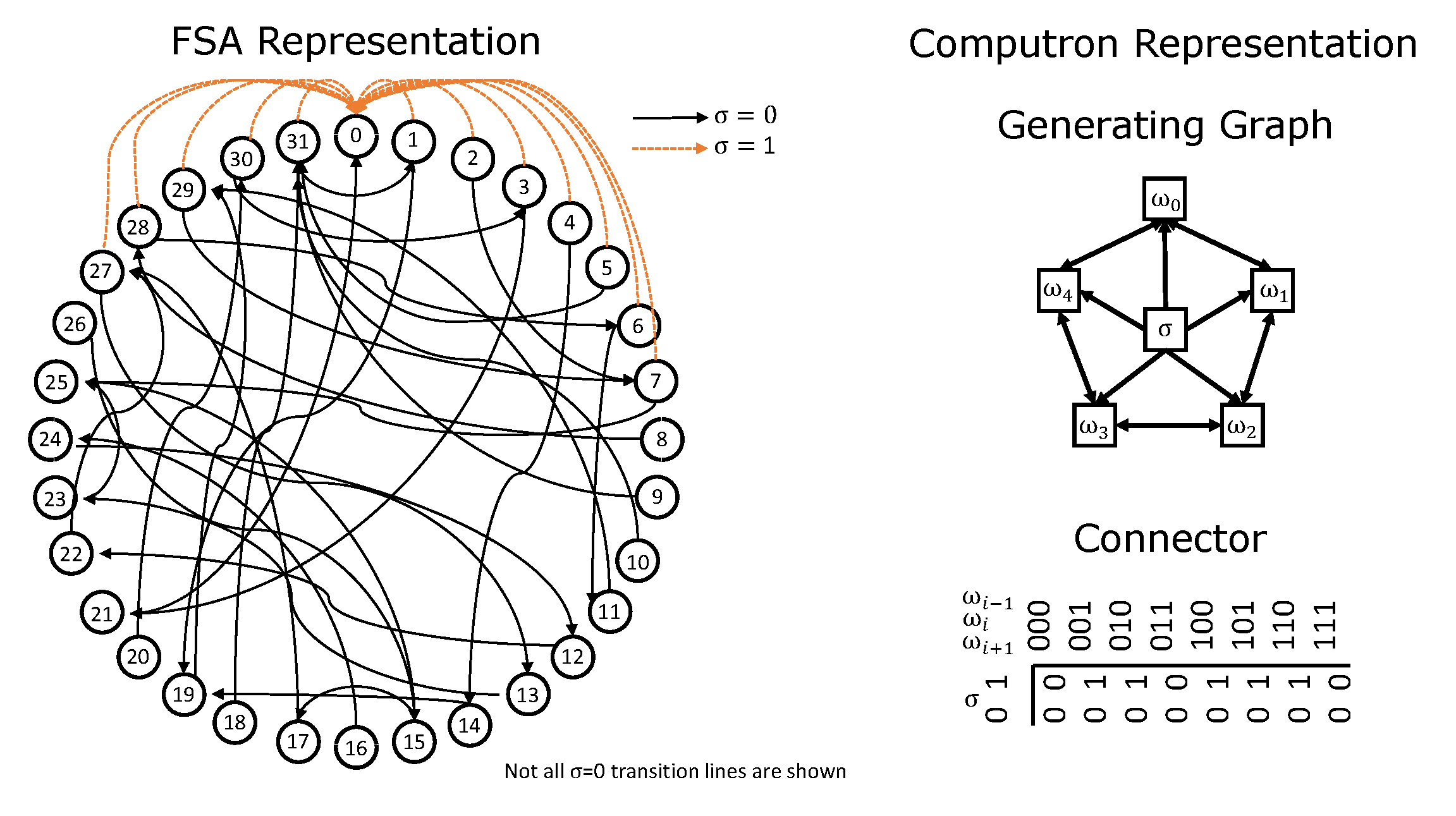
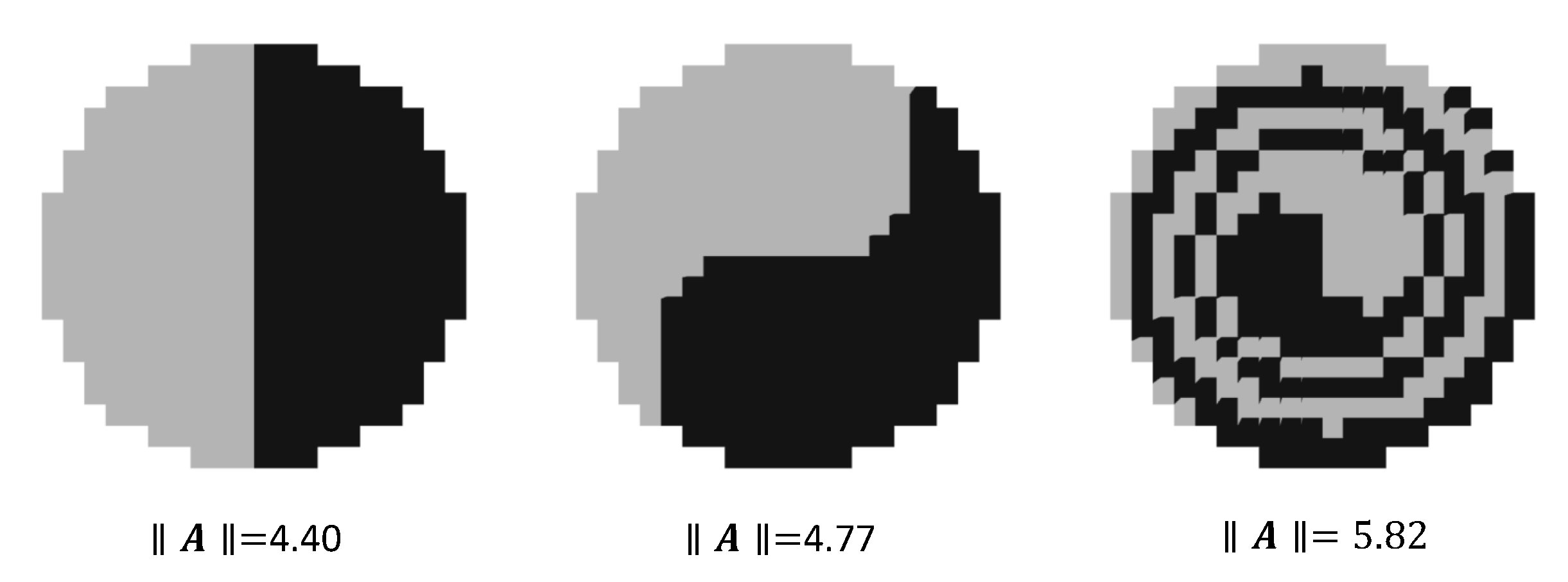
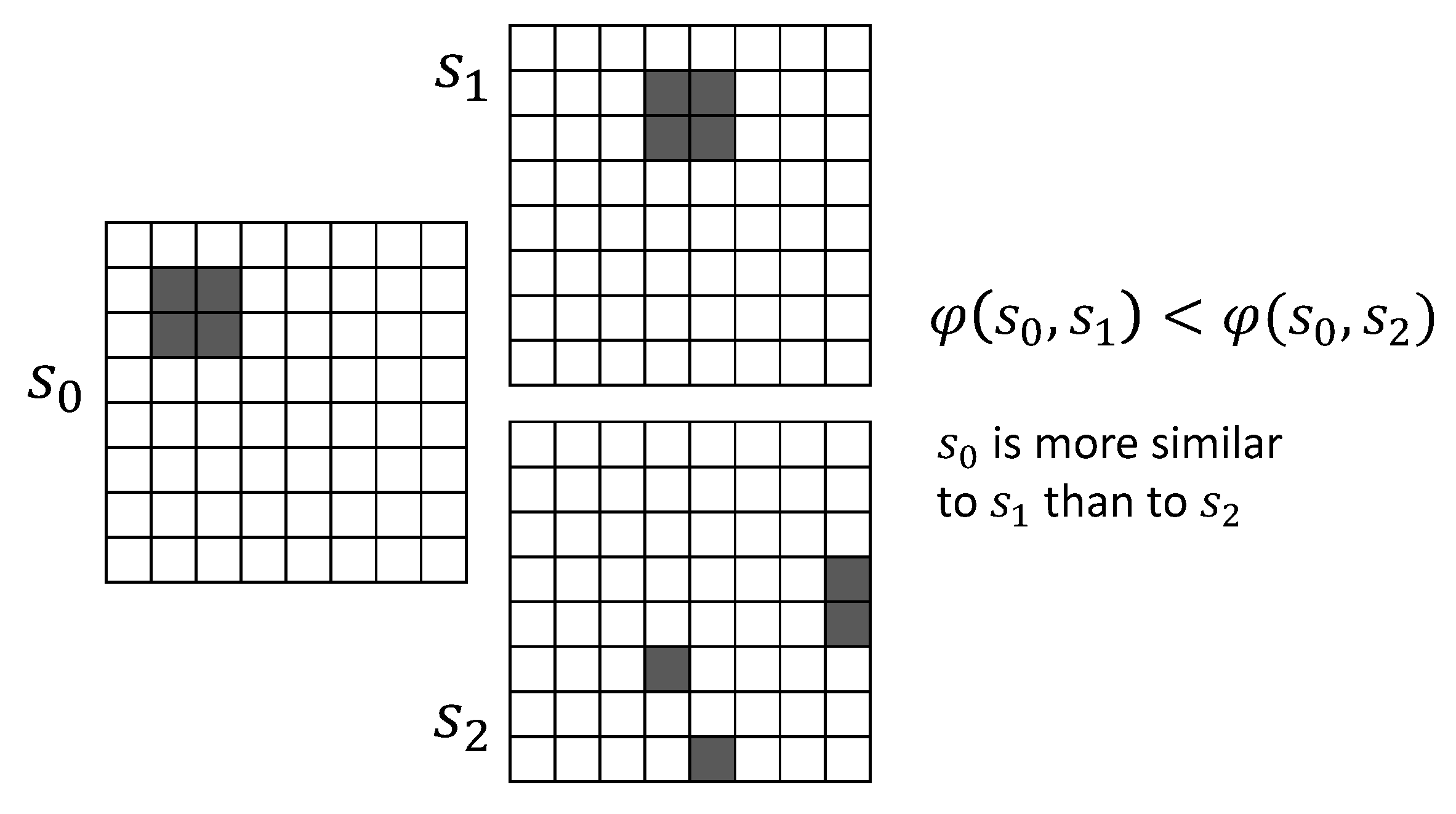

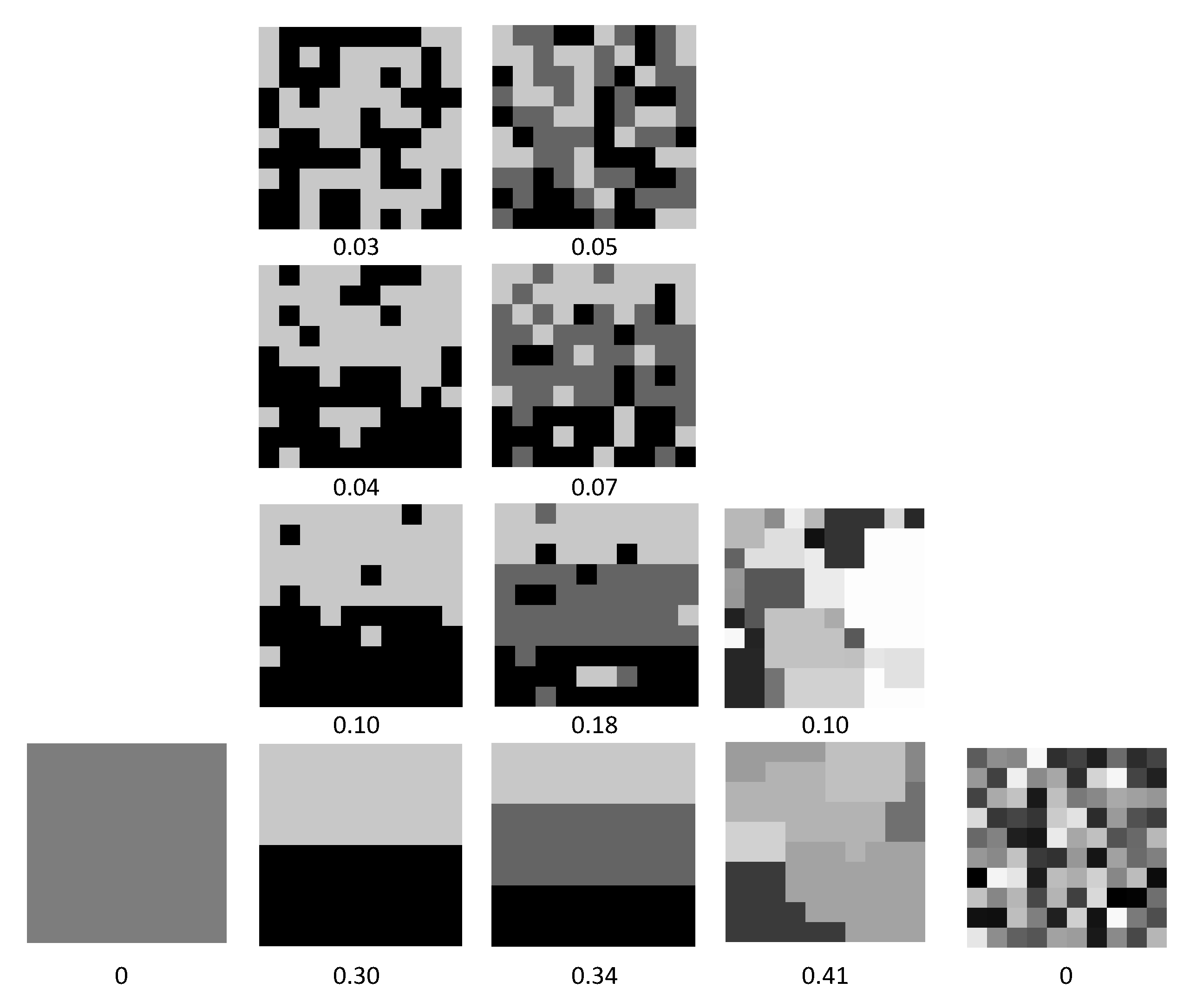
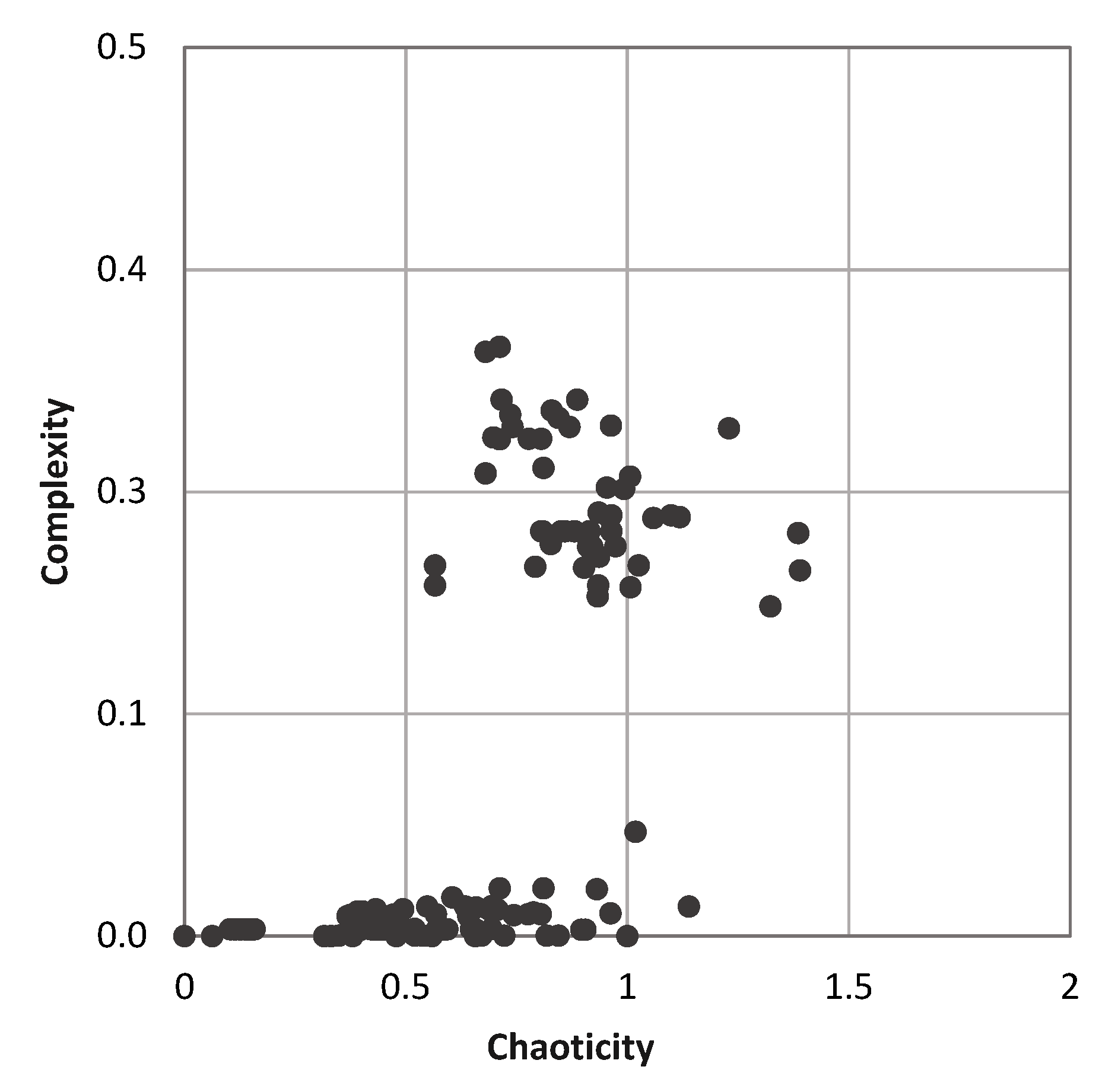

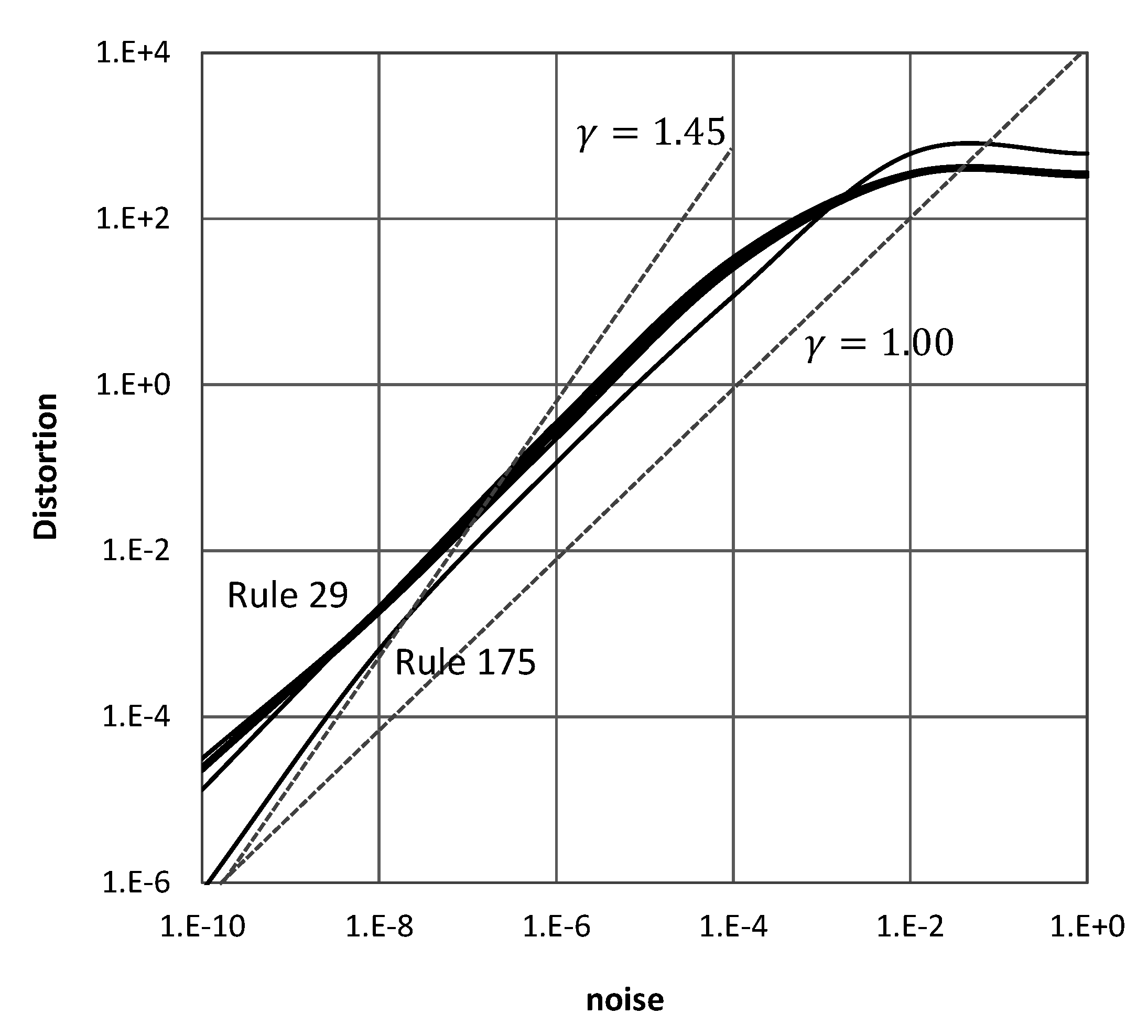
© 2020 by the author. Licensee MDPI, Basel, Switzerland. This article is an open access article distributed under the terms and conditions of the Creative Commons Attribution (CC BY) license (http://creativecommons.org/licenses/by/4.0/).
Share and Cite
Erkurt, M. Dynamics and Complexity of Computrons. Entropy 2020, 22, 150. https://doi.org/10.3390/e22020150
Erkurt M. Dynamics and Complexity of Computrons. Entropy. 2020; 22(2):150. https://doi.org/10.3390/e22020150
Chicago/Turabian StyleErkurt, Murat. 2020. "Dynamics and Complexity of Computrons" Entropy 22, no. 2: 150. https://doi.org/10.3390/e22020150




